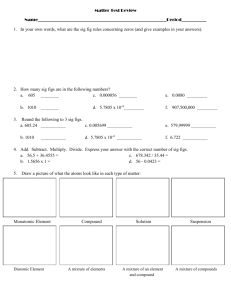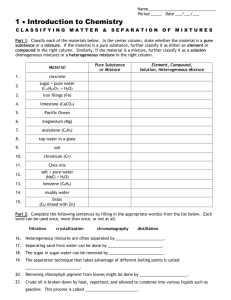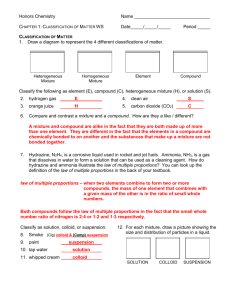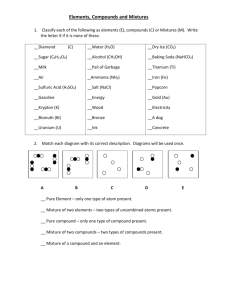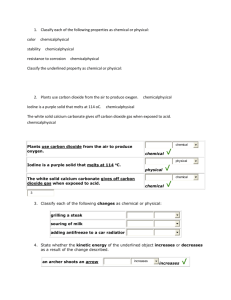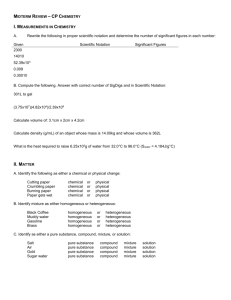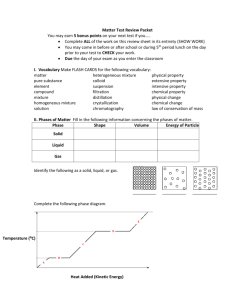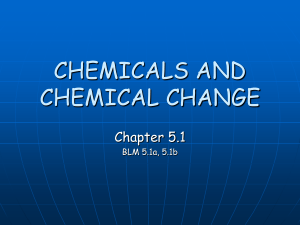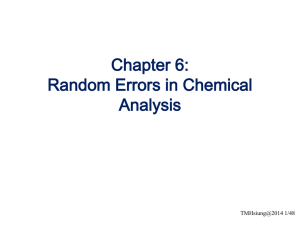ACP and Chemistry 1 Unit 1 Review Na
advertisement
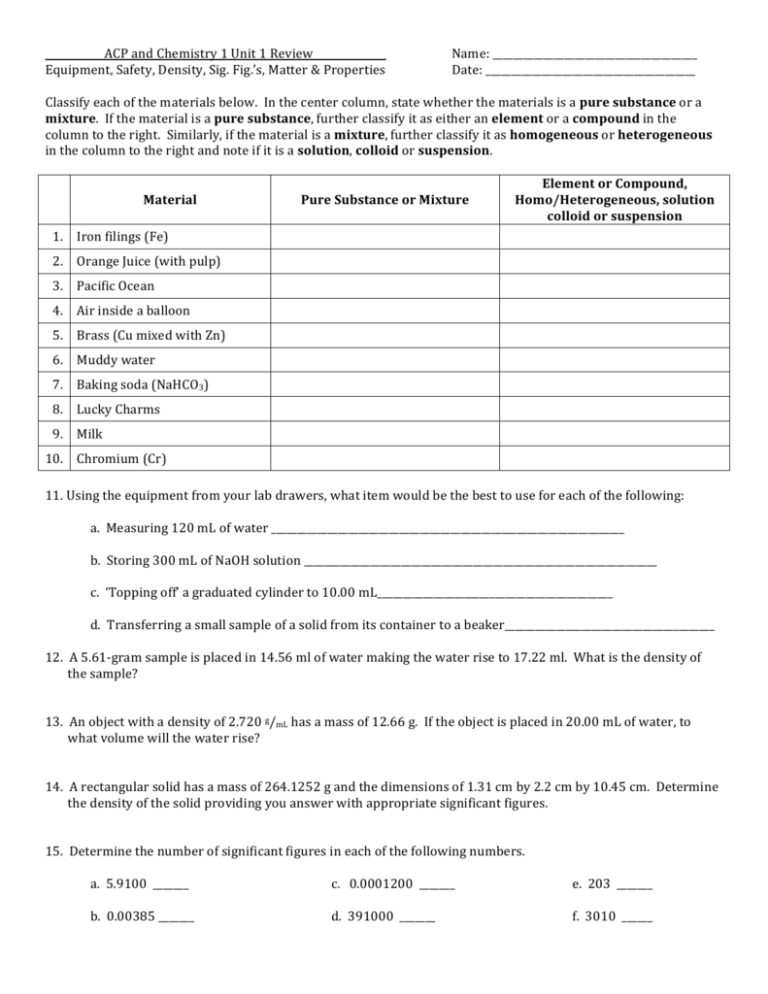
ACP and Chemistry 1 Unit 1 Review Name: ________________________________________ Equipment, Safety, Density, Sig. Fig.’s, Matter & Properties Date: _________________________________________ Classify each of the materials below. In the center column, state whether the materials is a pure substance or a mixture. If the material is a pure substance, further classify it as either an element or a compound in the column to the right. Similarly, if the material is a mixture, further classify it as homogeneous or heterogeneous in the column to the right and note if it is a solution, colloid or suspension. Element or Compound, Material Pure Substance or Mixture Homo/Heterogeneous, solution colloid or suspension 1. Iron filings (Fe) 2. Orange Juice (with pulp) 3. Pacific Ocean 4. Air inside a balloon 5. Brass (Cu mixed with Zn) 6. Muddy water 7. Baking soda (NaHCO3) 8. Lucky Charms 9. Milk 10. Chromium (Cr) 11. Using the equipment from your lab drawers, what item would be the best to use for each of the following: a. Measuring 120 mL of water _____________________________________________________________________ b. Storing 300 mL of NaOH solution _____________________________________________________________________ c. ‘Topping off’ a graduated cylinder to 10.00 mL______________________________________________ d. Transferring a small sample of a solid from its container to a beaker_________________________________________ 12. A 5.61-­‐gram sample is placed in 14.56 ml of water making the water rise to 17.22 ml. What is the density of the sample? 13. An object with a density of 2.720 g/mL has a mass of 12.66 g. If the object is placed in 20.00 mL of water, to what volume will the water rise? 14. A rectangular solid has a mass of 264.1252 g and the dimensions of 1.31 cm by 2.2 cm by 10.45 cm. Determine the density of the solid providing you answer with appropriate significant figures. 15. Determine the number of significant figures in each of the following numbers. a. 5.9100 _______ c. 0.0001200 _______ e. 203 _______ b. 0.00385 _______ d. 391000 _______ f. 3010 ______ 16. Round the following value to the required number of significant figures: a. 86753090 to 3 sig. fig. ____________________________ c. 45319001 to 3 sig. fig. ____________________________ b. 0.00087642 to 2 sig. fig. _________________________ d. 0.3718912 to 4 sig. fig. ____________________________ 17. Perform the following calculations providing the answer with appropriate number of significant figures. a. 5.40 + 9.811 + 6.2114 + 4.211 = c. 0.00212 x 0.0073 x 0.001321 = b. 0.00212 + 0.0073 – 0.001321 = d. (5.40 x 9.811 x 6.2114) / 4.211 = 18. Compare and contrast the following terms: a. mass & matter ____________________________________________________________________________________________________ b. atom & compound ________________________________________________________________________________________________ c. physical property & chemical property _________________________________________________________________________ d. mixture & pure substance _______________________________________________________________________________________ e. physical change & chemical change _____________________________________________________________________________ 19. Using circles to represent particles, draw diagrams that illustrate the arrangements of particles in solids, liquids, and gases. Solid Liquid Gas 20. Explain how energy involved in chemical and physical change. 21. Classify each as chemical change (cc) or physical change (pc): a. Ice melting ___________________ d. Paper burning ___________________ b. Metal rusting ___________________ e. Liquid evaporating ___________________ c. Gas pressure increasing ___________________ f. Food digesting ___________________ 22. What is the difference between intensive and extensive properties? 23. Consider the burning of gasoline and the evaporation of gasoline. Which process represents a chemical change and which represents a physical change? Explain your answer. 24. Describe the difference between a homogenous mixture and a heterogeneous mixture and give an example of each.

